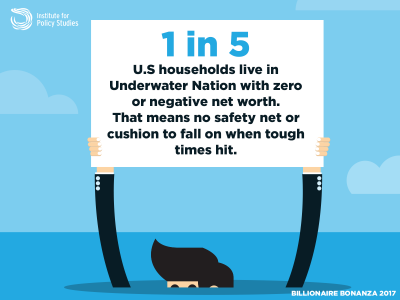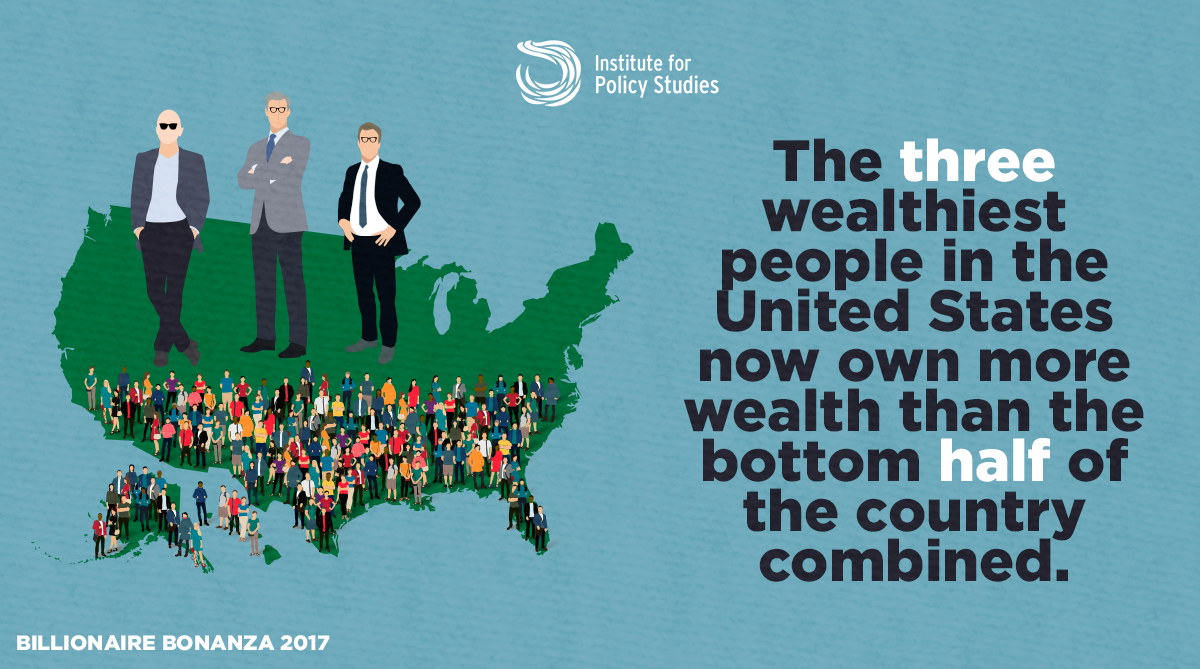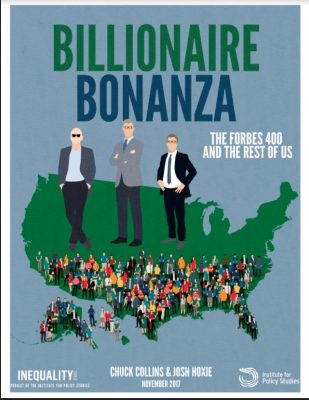Over recent decades, an incredibly disproportionate share of America’s income and wealth gains has flowed to the top of our economic spectrum. Americans at the other end of our economic spectrum, meanwhile, watch their wages stagnate and savings dwindle.
This report exposes the extreme wealth concentrated within the fortunes of the 400 wealthiest Americans and compares this wealth to the much more meager assets of several different segments of U.S. society. We draw data from both the recently released 2017 Forbes 400 and the Federal Reserve’s 2016 Survey of Consumer Finances.
Key Findings:
- The three wealthiest people in the United States — Bill Gates, Jeff Bezos, and Warren Buffett — now own more wealth than the entire bottom half of the American population combined, a total of 160 million people or 63 million households.
- America’s top 25 billionaires — a group the size of a major league baseball team’s active roster — together hold $1 trillion in wealth. These 25 have as much wealth as 56 percent of the population, a total 178 million people or 70 million households.
- The billionaires who make up the full Forbes 400 list now own more wealth than the bottom 64 percent of the U.S. population, an estimated 80 million households or 204 million people — more people than the populations of Canada and Mexico combined.
- The median American family has a net worth of $80,000, excluding the family car. The Forbes 400 own more wealth than 33 million of these typical American families.
- One in five U.S households, over 19 percent, have zero or negative net worth. “Underwater households” make up an even higher share of households of color. Over 30 percent of black households and 27 percent of Latino households have zero or negative net worth to fall back on.

These figures underestimate our current levels of wealth concentration. The growing use of offshore tax havens and legal trusts has made the concealing of assets more widespread than ever before.
To reduce extreme wealth inequality in the United States we need to take two key steps:
- First, we must not make inequality worse through new tax cuts for the wealthy. The proposed Trump tax cuts, as currently designed, would grow top 1 percent fortunes and do little to reduce the ranks of America’s “underwater nation.”
- Second, we need to implement policies to reduce concentrated wealth. Inequality will continue to widen unless we intervene directly to reduce grand concentrations of private wealth. By taxing our wealthiest households, we could raise significant revenues and then invest these funds to expand wealth-building opportunities across the economy. We could also broaden the distribution of America’s wealth by encouraging employee ownership, matching savings programs, and similar initiatives.
Read the full report here [PDF].
Find sharable graphics here.

